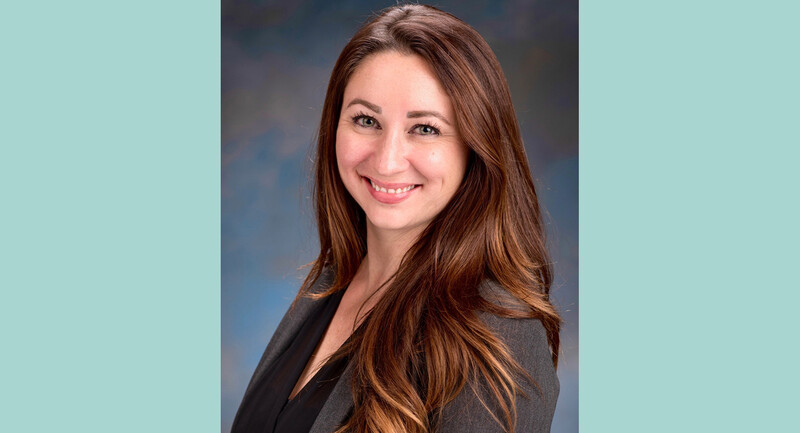November 1, 2018
•
5 min (est.)•
Vol. 76•
No. 3ASCD Policy Priorities / Teachers Get Political
Teacher political candidates are the next step in advocacy.
This publication went to press before the results of November's midterm elections were tallied. But we don't need to know who got the most votes to declare educators one of the big winners of this campaign season.
More than 150 teachers across the United States ran for state or federal elected office as a major political party nominee in this fall's general elections. Candidates ranged from 2016 National Teacher of the Year Jahana Hayes, who was running for an open congressional seat in Connecticut, to Dustin Parsons, an 8th grade teacher in Arkansas challenging a four-term incumbent in a state legislative district south of Little Rock.
Pundits have speculated about the sudden surge of educators as political candidates. But to astute observers of education policy and politics, this development is just the latest in an ongoing evolution of activism. Perhaps the only thing unexpected about all of these educators running for state and federal legislative positions is why it took so long.
A confluence of policy issues and political conditions have intersected to forge this level of educator involvement in the electoral process. Here are some of the key factors:
Lingering effects of the Great Recession. It's been 10 years since the economic calamity when the world's financial institutions teetered on the precipice of insolvency. Since then, the U.S. unemployment rate has dropped to under 4 percent, the stock market set a record for longest bull market, and annual GDP growth is a robust 3 percent. Yet, in most states, education budgets have not returned to their pre-2008 funding levels. Twenty-nine states provided less state funding per student in 2015 than in 2008 (when adjusted for inflation), according to a funding analysis by the Center on Budget and Policy Priorities (2017). And the problem isn't just that states have failed to increase their investment in education. Eighteen of those states that spent more on education seven years ago cut taxes and reduced their overall revenue rather than keeping taxes stable and replenishing their education budgets. The predictable result of less funding and rising enrollments has been the elimination of school-related jobs, programs, and an increase in teacher-student ratios in 34 states (American Federation of Teachers, 2018).
Teacher walkouts and low salaries. Nowhere has this funding deficit played out more publicly than in Oklahoma, where the state was running a perennial $1 billion budget shortfall overall; districts had shortened their school week to four days; and in 2016, teacher salaries were the second lowest in the nation. Not only had Oklahoma teachers not gotten a raise in 10 years, but by 2017, the average pay had actually gone down compared to the prior year (Perry, 2018). The teacher strike in the Sooner State mirrored teacher revolts in West Virginia, Arizona, and Kentucky. Teachers and schools in those states have endured similarly dire and long-standing fiscal conditions. After 10 years of barely treading financial water while all around them the economy continued to boom, many teachers hit their breaking point. And the success of teacher activism in Oklahoma (a $6,000 pay raise) and West Virginia (a 5 percent pay raise) showed educators that such protests can boost not only morale, but salaries, too (Perry, 2018).
Frustration with the Trump Administration. If stagnant teacher salaries were the tinder, the election of President Donald Trump—and his appointment of Betsy DeVos as U.S. Secretary of Education—was the spark that set many teachers aflame. During the presidential campaign, there was little to Trump's education platform besides a call for more money for vouchers, and neither candidate made much mention of education. So it was hardly an issue that riled up educators before President Trump was elected. But Trump's overall job approval rating has never exceeded 45 percent in any of Gallup's weekly tracking polls during his first two years in office, and there's a striking gender gap discrepancy in his popularity that might explain why U.S. public school teachers (nearly three-quarters of whom are female) as a group aren't enamored with the Oval Office occupant: Trump's approval rating among men is 54 percent positive and 45 percent negative; among women, it's 32 percent positive and 65 percent negative, according to the 2018 Washington Post-Schar School poll.
Compounding many educators' dismay has been the ascension of President Trump's education secretary. DeVos has surprisingly high negative ratings for someone leading an agency that's the smallest of the cabinet departments (Giaritelli, 2018). For public school educators, DeVos's leadership of the Department of Education has been especially problematic. Not only does she have no professional experience in education, but for two decades she has been one of the nation's preeminent champions (and funders) of school privatization efforts in the states. In addition, she has made eliminating the $2.1 billion for educator professional development (Title II of the Every Student Succeeds Act) the cornerstone of all the Trump Administration's education budget proposals.
The DeVos appointment may have been the turning point in teachers getting politically involved. For years, educators have been encouraged to take a more active role in policy debates. A wide-ranging assortment of advocacy organizations and professional associations have called for educators to share their expertise with decision makers in the policymaking process. ASCD, through its Educator Advocates program, has been prominent among—if not the leader of—those voices. DeVos's appointment was a rebuke to this paradigm of teachers sharing their expertise. How could teachers effectively offer their professional opinions to those whom they saw as dilettantes or with long-standing antipathy to their interests?
These factors ultimately led to an impressive cadre of educators running for elected office. They are the next generation in the logical evolution of teacher involvement in advocacy and policy. These candidates aren't interested in persuading policymakers to their point of view; they intend to be the policymakers with the ultimate decision-making authority. They're not interested in half-a-loaf compromises; they want to want to run the whole damn bakery.
There were individual winners and losers in November's election results. But as far as teachers are concerned, the impressive number who were candidates this year is a big win for education overall—and an encouraging sign that ever-larger numbers of educators will take the lead in education policymaking.
References
•
American Federation of Teachers. (2018). A decade of neglect: Public education funding in the aftermath of the Great Recession. Washington, DC: Author.
•
Center on Budget and Policy Priorities. (2017). A punishing decade for school funding. Washington, DC: Author.
•
Gallup. (2018, September). Trump Job Approval (Weekly). Available: www.gallup.com/home
•
Giaritelli, A. (2018, March 21). "Jim Mattis has the highest approval rating in Trump's cabinet, survey finds." Washington Examiner.
•
Perry, G. (2018). Oklahoma teachers' real take-home pay has shrunk for 10 out of the past 11 years. Tulsa: Oklahoma Policy Institute.
•
Washington Post. (2018). Washington Post-Schar School poll: June 27–July 2. Washington, DC: Author.








